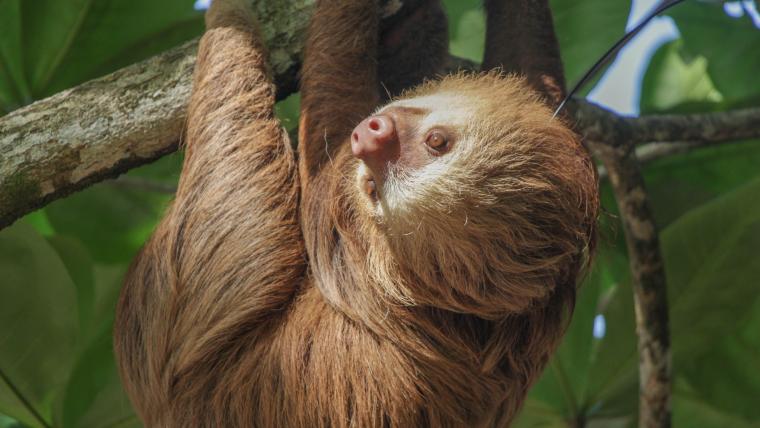
How to keep the sedentary sloth thriving in slow motion
As the sun rises on Costa Rica’s rainforests, most animals are awake and in search of food. But high up in the trees, secluded from the bustle, the sloths are snoozing peacefully. Their plan? To sleep for nearly 12 hours and remain cocooned among the branches. Sloths only venture to the ground once a week to relieve themselves. The world’s slowest mammal finds sanctuary in the treetops, but their habitat is at risk.
With hooked claws extending from their long arms, sloths are adapted for an arboreal lifestyle. The sluggish animals move at a speed of 1.6 kilometres per hour, and they have a low metabolic rate. Sloths only need to consume a small amount of food in the time that they’re awake, reaching for fruit, shoots, and leaves.
A sloth’s pace may seem to make them vulnerable prey, but they are hidden by the canopies. Due to their inertia, fungi and algae grow on their coarse fur, camouflaging them from prowling predators. However, sloths face another looming threat – deforestation. When trees are chopped down, they’re forced into urban areas where they have to navigate along power lines or face conflict with humans and dogs.
The survival of sloths is dependent on trees. In recent years, Costa Rica has become a leader in reforestation with nearly 60% of its land returned to forest. But more still needs to be done to protect sloths from habitat loss. Although their leisurely nature is what makes them thrive, we must act fast to conserve them.
Footage by The Sloth Conservation Foundation was used in the creation of this film.






























Please sign in to leave a comment